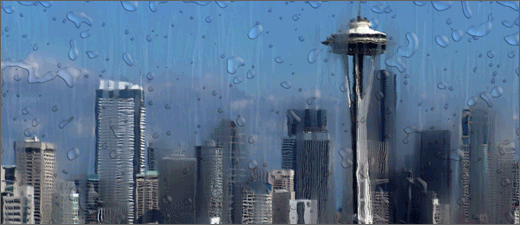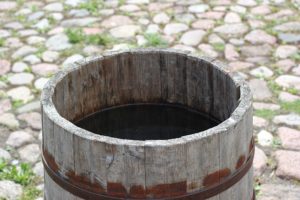 Until May 12, 2016, it was illegal for a Colorado resident to capture rainwater from his or her roof for any reason, not even to water plants or a garden.
Until May 12, 2016, it was illegal for a Colorado resident to capture rainwater from his or her roof for any reason, not even to water plants or a garden.
A step in the right direction, Gov. John Hickenlooper signed House Bill 1005 into law that allows for the limited harvesting of rainwater. The law takes effect on August 20, 2016. The issue of water collection has been a hot topic for years; other attempts to make residential rainwater collection legal have failed in the state legislature. Why? Businesses in the agriculture industry and other water rights holders feared that there wouldn’t be enough runoff for their use.
Why now? According to Pueblo Rep. Daneya Esgar, in a quote from a story from CBS Denver, “We just want to make sure we’re not the only state in the union where this is illegal. I think that’s why it gained so much national attention, even international attention”.
Now, residents can collect rainwater – but with limits. The law allows for harvesting of up to 110 gallons and the collected water must be returned to the homeowner’s property – perhaps to water a garden or wash a car. However, the only way the law could be passed without pushback from the agriculture industry, was to include a provision that if farmers and ranchers can prove that as a result of the new law, there is not enough water for their use, the number of barrels allowed could be reduced.
There are different restrictions, depending on the type of residence you have. Colorado State University has written guidelines on how and how much rainwater you can collect if you are a Colorado resident and Colorado State University Extension has developed a fact sheet with additional details on rainwater harvesting.
How do RainBank’s readers feel about this law? We value your feedback. Leave a comment with your thoughts about the new Colorado law allowing limited residential rainwater collection.

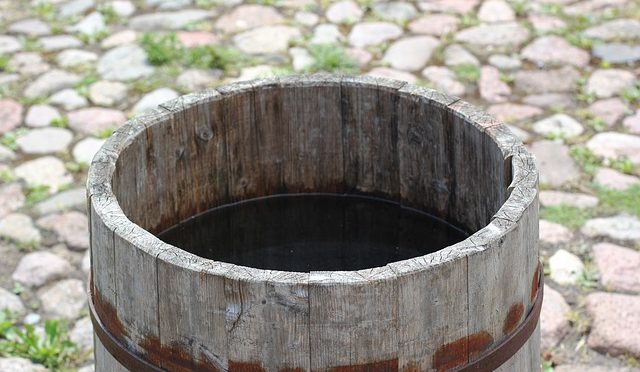
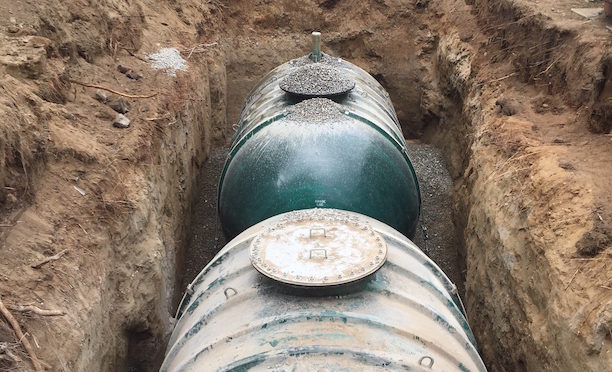
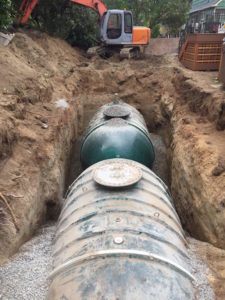 RainBank Rainwater Systems designed and installed a potable rainwater collection system for a remodel in Seattle City limits. The customer wanted to supplement city water usage with “as much storage as possible”, but had very limited space and aesthetics were a main concern. The solution came with two 5,000 gallon buried water tanks in the middle of a very small backyard.
RainBank Rainwater Systems designed and installed a potable rainwater collection system for a remodel in Seattle City limits. The customer wanted to supplement city water usage with “as much storage as possible”, but had very limited space and aesthetics were a main concern. The solution came with two 5,000 gallon buried water tanks in the middle of a very small backyard. 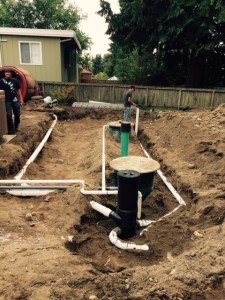 Always appreciating a challenge, RainBank dug right in with its awesome excavator, Shane, who managed to export over 120 square yards of soil off site, set the dead men anchors, and nestle the two fiberglass tanks in place with the touch of a feather. The buried tanks were strapped to the dead men (anchoring) and connected together with a 4″ crossover valve. He then backfilled 80% with 5/8″ drain rock while Chad, RainBank’s engineer, took careful deflection readings to be sure the fiberglass tanks were not being distorted during the process.
Always appreciating a challenge, RainBank dug right in with its awesome excavator, Shane, who managed to export over 120 square yards of soil off site, set the dead men anchors, and nestle the two fiberglass tanks in place with the touch of a feather. The buried tanks were strapped to the dead men (anchoring) and connected together with a 4″ crossover valve. He then backfilled 80% with 5/8″ drain rock while Chad, RainBank’s engineer, took careful deflection readings to be sure the fiberglass tanks were not being distorted during the process.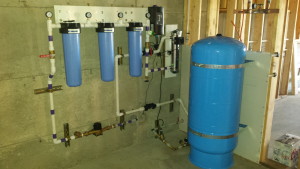 Our plumber, Tracy did a great job of use of space on this project. Using 4’x 20′ canisters with sediment, carbon, and 1 micron sediment for cyst removal, followed by a class “A” UV, the filtration train provides potable whole house demand. The system was designed to be easily maintained so the homeowner can be his own purveyor of clean, safe, reliable water. With the amount of collection area, annual rainfall and frequency, this two person occupancy should be able to meet 100% of its household use, but also have city water as a backup, just in case.
Our plumber, Tracy did a great job of use of space on this project. Using 4’x 20′ canisters with sediment, carbon, and 1 micron sediment for cyst removal, followed by a class “A” UV, the filtration train provides potable whole house demand. The system was designed to be easily maintained so the homeowner can be his own purveyor of clean, safe, reliable water. With the amount of collection area, annual rainfall and frequency, this two person occupancy should be able to meet 100% of its household use, but also have city water as a backup, just in case. 